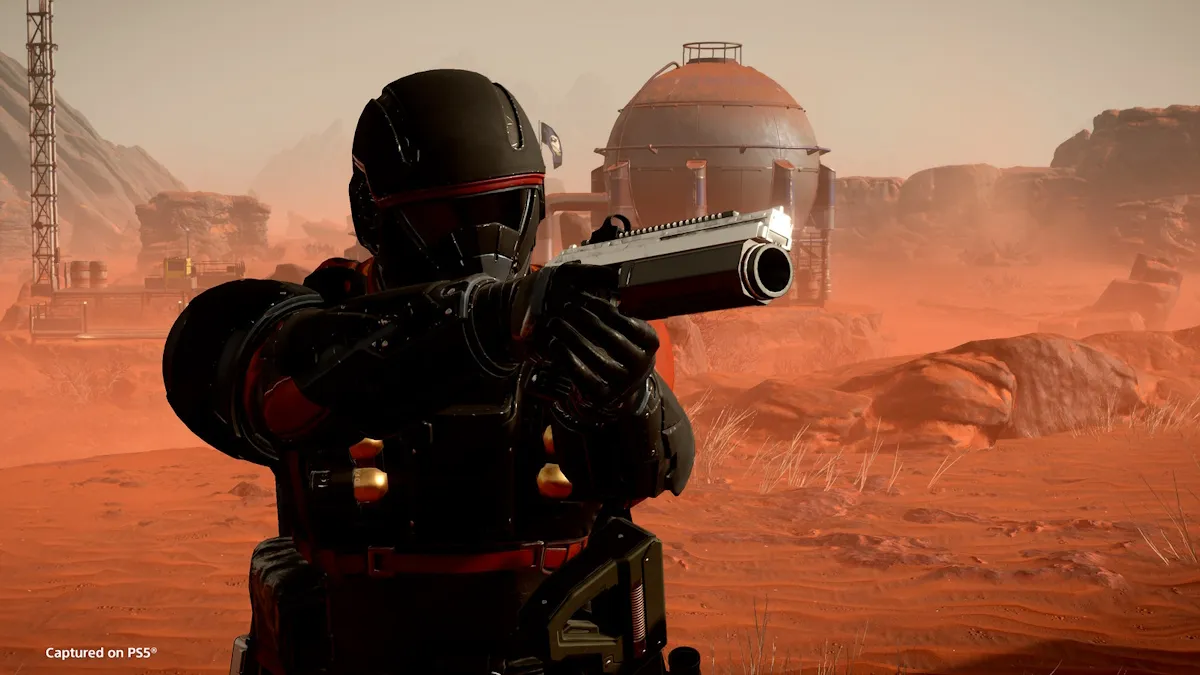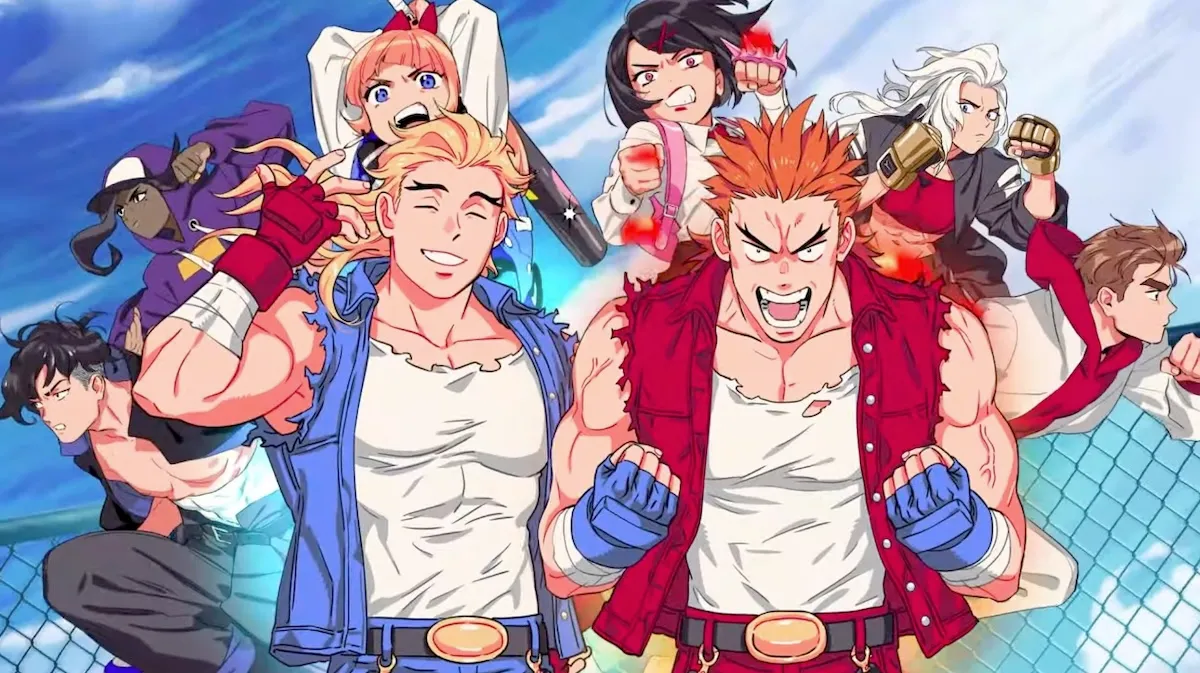
The ending, it’s been said, is the most important part of any story. The beginning sets the scene, the middle develops characters and conflict, and the ending pays off the whole shebang. You can develop the coolest and most interesting characters in the world, but what matters most is where they end up. In this respect, other art mediums have it relatively easy: all you’ve gotta do is develop a character, give him or her a conflict, and watch how the conflict changes them, for better or worse. We follow the Joad family in The Grapes of Wrath until they go their separate ways. We follow The Wild Bunch until they decide to go out in a blaze of glory. Boom. Done. Simple.
But what of the videogame ending? Despite the fact that the average videogame lasts longer than three movies, we always want more. We don’t want closure. We don’t want change. And, most importantly, we don’t want to be made unhappy. How would an average gamer feel if he played a videogame to the end, and suddenly had to watch his character die without having any say in the matter? Or what if, instead of experiencing a pulse-pounding, action-filled climax, the game simply ends with a few lines of dialogue and a quick scene of violence? The player would feel betrayed, for one. He’d feel angry. And he’d feel totally dissatisfied.
Which brings up the question: how does one effectively conclude a videogame? What parts comprise “good” and “bad” videogame endings? Why are videogame endings handled differently than the endings of films or literature?
Potential answers to these questions can be found after the jump.
First, the “shoulds.” Hypothetically, all videogame endings should do two things:
-Be narratively satisfying
First things first: the ending to a videogame, like the ending to all good stories, must have a satisfying narrative impact. Unless a game is intentionally structured as part of a series, it must conclude the main conflict of the story — in other words, Mario eventually has to find a castle that does contain the princess. It used to be at least somewhat acceptable for there to be no ending whatsoever (see: Pilotwings 64, the weird memoir-style ending of Bionic Commando), but today, the player wants something to conclude the story.
-Come about as a result of the player’s actions
For reasons that will be explored later, this ending aspect is rarely if ever implemented in modern videogaming, but it nonetheless remains wholly unique to videogaming as a medium. Choose Your Own Adventure books notwithstanding, videogaming is the only art form that gives the audience the potential to decide how a story should end. While this imperative may seem as if it only applies to games with multiple endings, this isn’t necessarily the case: even a game with only one ultimate ending can still fulfill this prerequisite, so long as everything the player at least appears to be involved in how the narrative turns out. For example, the original Max Payne has only one ending, but the game establishes that one specific thing must be done and gives the player a motivation (revenge) and a desire (a wish to see the final cutscene) in order to make the player see this goal to its completion. So long as the ultimate agenda of the game does not conflict with the ultimate agenda of the player, then the player can convince him or herself that the ending at least partially came about from his or her actions.
While these two aspects may seem simplistic, they are often misused, ignored, or completely abandoned in mainstream videogaming fare. There are a multitude of reasons for this – let’s consider a few of them.

Narratively satisfying endings are not as satisfying in video games
Books and films are generally built on emotional payoff. While many action films do indeed end with a huge, spectacular final battle, said battle is much, much more important if you care about the characters. Yeah, when the outlaws die at the end of The Wild Bunch they do so in an orgasmic ballet of death and destruction, but the real importance of the climax involves the Bunch’s desire to die for a purpose other than simple greed. As it stands, many videogames either cannot make us care about our characters, or they conversely force us only to care about them in their relation to the “save the world”/”stop the terrorists” plot (e.g., if the player’s partners die in Rainbow Six: Vegas, the player experiences only irritation at failing the mission, not tragedy over losing a comrade). We may one day be witness to a videogame that has the luxury of relying only on an emotional climax, but at the moment this is an unrealistic expectation.
Gamers want big. Gamers want explosive. Videogames, for the most part, revolve around gameplay first and story second. It’s great to have an involving story, but is the gameplay that the story surrounds fun? Would I want to keep playing the game, even if there was no story? I don’t wish to pass judgment on this game design philosophy (Gears of War is fun, even if it does have a total lack of story or character), but it’s a simple truth that the majority of games today favor spectacle over drama.
Therefore, game endings are generally difficult affairs that present the player with the largest gameplay challenge possible. Sometimes, this means a huge gunfight; sometimes, this means an escape from an exploding building; sometimes, it means a boss battle. If a game does not end in this way, it appears anticlimactic: imagine playing a game where you tracked a bad guy all across the world, always looking forward to the explosive duel that will result when you find him. After hours and hours of playing, you finally track him down — and discover he killed himself a few minutes before you entered the room. Is that narratively shocking? Yes. Would it make for a great ending to a film or a novel? Yes. Would it absolutely infuriate a player if he was forced to experience it in the context of a videogame? Absolutely. Even The Wachowski brothers knew this when they helped develop Path of Neo: Neo’s martyrdom doesn’t work in the context of a videogame, because the player demands an ultimate gameplay challenge to conclude the experience. Whatever your opinions are on the Wachowskis (and, to be honest, they probably coincide with mine), they have a point — right or wrong, the vast majority of gamers care more about an explosive finale than an interesting narrative denouement.
Then again, the Wachowskis’ chose to solve this problem by changing the ending of Revolutions in order to make the player fight a massive, two-story-tall robot version of Agent Smith. Draw your own conclusions.
Since unconventionally dramatic endings do not lend themselves to pleasing gameplay, most videogames often end with one of the aforementioned action climaxes, followed by a quick bit of story to wrap things up. Knights of the Old Republic, as dramatic and wonderful as it was, simply ended with a boss battle and a quick cutscene showing a good/bad ending, depending on whether you played light or dark side. This method of ending a game is problematic, but also seemingly unavoidable: on the one hand, the boss battle/epilogue format can get very boring, very fast. But on the other hand, would you really want to play a game that doesn’t give the player a tremendously satisfying gameplay challenge during its climax? I’m obviously a big supporter of gaming as an art medium, but even I have to admit that an ending like the suicide scenario detailed above would be very, very frustrating.

Sad endings are irritating in the world of video gaming
Okay, so games generally can’t end without a big, blustery action climax. Fine. Understandable. We can deal with that problem later, once we start redefining what it means to be a videogame. But in order to give current game endings a much better narrative punch, why don’t we make the story conclusion that follows the boss tragic by, say, killing the player? That way, the player gets his dose of videogaming action, and we simultaneously give the ending some narrative weight.
Well, you can do this, but it’s more than a little risky: an ending where the player is punished or killed for essentially following the linear path the game required him to follow is almost a surefire way to piss off your audience.
Take Mafia, for example. Despite its status as a GTA-style nonlinear game, Mafia only has one ending. And it’s far from happy, so if you aren’t a fan of spoilers you might want to skip ahead a few paragraphs. Essentially, the player progresses through the game as Tommy Angelo, a cab driver who rises through the mafia ranks. Throughout the game, he secretly refuses to follow orders (he lets no less than two enemies of the Salieri family go free instead of killing them), and in the end, it catches up with him: though he kills many Salieri gang members and gets Salieri sentenced to life in prison by working as an informant for the FBI, the gang does not forget about him. After a montage of newspaper headlines showing the imprisonment of many Salieri gang members, we fast-forward about twenty years in time. Tommy is about 50 years old, obviously retired, and we see him watering his lawn on an idle summer day. Suddenly, a car pulls up. Two men in suits come out, identify the old man as Tommy, and say the last words Tommy will ever hear: “Salieri sends regards.” Then, bang — they shoot him to death on his own front lawn.
Now, does this ending serve a thematic purpose? Of course. Is it narratively satisfying? Very much so. But does it piss the player off? Absolutely. The problem with endings such as Mafia’s is that in order for the game to make something horrible happen to the player, it must take control away — considering audience control is one of the most important things in videogames, this creates frustration. When the developers decide to kill Tommy Angelo in a cutscene, it is an act of betrayal: the player has had control over everything Tommy has done up to that point, only to have it suddenly taken away so Tommy can be killed. Had the player had control over the situation, Tommy simply would not have died: the player would have found a way to survive (many Mafia fans have voiced their desires for an alternate ending, where Tommy kills Salieri instead of turning him in) and thus would have negated the game’s thematic statement that there really is no way out of the mob. In essence, this ending does not come about as a result of the player’s actions (in this case, because the player is suddenly refused any control over the character), and therefore makes the player feel cheated.
Examples like this are not particularly common — as I will go into later, most game developers would never remove the possibility of a sequel by killing the protagonist – but they do, nonetheless, exist. In Apocalypse for the PSOne, the player kills all four Horsemen of the Apocalypse, only to watch an ending cutscene where the protagonist, Trey Kincade, is killed and possessed by a demon, essentially becoming the Fifth Horseman.
I wholeheartedly support the movement for more sad and depressing endings and games (seriously, I do), but it is fantastically difficult to simultaneously create a depressing and satisfying ending. Playing a videogame, while fun, does feel something like work: you’ve slain thousands of enemies or solved hundreds of puzzles and, in return, the player expects to be rewarded for his efforts. If the player is not rewarded for his hard work, and is instead punished for the sake of the story, the problems begin. It’s tough to admire the thematic and narrative implications of a sad ending when you’re busy wishing death upon the developers who killed your character without asking for your input.

Branching storylines/alternate endings are really hard to execute effectively
It’s very difficult to successfully implement branching storylines and alternate endings, despite how effective they might be in reflecting a player’s gameplay choices through narrative, and vice-versa. I’ve sort-of-kind-of talked about this before, but suffice it to say that alternate endings are hypothetically fantastic — a happy ending will feel truly earned through player choice and a sad ending won’t feel like a gyp, because it came about due to tangible player action. But sadly, multiple endings are simply difficult to do correctly.
Even ignoring the financial and developmental difficulties in effectively structuring a story around dozens of variables related to player choice, games with multiple endings still suffer from one intrinsic problem: player dissatisfaction. If a game possesses multiple endings — say, one happy, one unhappy — one of these will arbitrarily be labeled the “true” ending. Guess which one. If a player gets an unhappy ending, the resulting feeling is almost akin to that felt when seeing a “game over” or “mission failed” screen: when unhappy things occur in such a videogame, it’s usually because of a player’s failure to complete some task. Instead of enjoying the emotional resonance of the unhappy conclusion, the player instead wracks his brain with questions: what did I do wrong? How can I go back and fix it? The player does not consider this a “real” ending and future sequels to the game will likely not consider the unhappier ending canon — as a result, depressing endings in multiple-conclusion games are almost entirely ignored on a purely narrative, dramatic level.

Money, money, money
To put it bluntly, there will not be a game made in the next decade that cannot be sequelized. In our current “evolution, not revolution” gaming climate, we opt for sequels and spinoffs and clones more than we respect the standalone work of art, in the same way other genres do. As a result, games are almost required to have some sort of open end, which usually involves (A) the protagonist surviving, and (B) the possibility of conflict remaining. Gears of War ends with absolutely nothing solved. Halo 2 ends on a cliffhanger. The first God of War kept Kratos alive but put him in a position to get angry and violent again, and God of War II ended before Kratos’s ultimate goal was even complete.
The standalone game doesn’t exist anymore — just ask Keita Takahashi, the creator of Katamari Damacy. He originally wanted Katamari to be a standalone title. But it sold really well, so they made a sequel. When the sequel was made, he again didn’t want to make another – even going so far as to insert a message at the end of the game, essentially telling the player to be happy with the Katamari games he has and not to wish for more.
Then they made Me and My Katamari, and said it would be the last.
Then they announced Beautiful Katamari.
While the Katamari series is hardly known for its hard-hitting narratives, hopefully you see my point: the state of the gaming industry necessitates that a game have the ability to spawn numerous sequels and ripoffs, meaning that a game must have a certain type of ending, which limits the dramatic and thematic payoff of a great ending. What if Macbeth hadn’t ended with the deaths of all the main characters, but instead finished with Macbeth running to the hills, sword in hand, swearing vengeance on his usurpers in a soon-to-be-written sequel? I wouldn’t dare suggest that a game with an open ending is automatically unsatisfying, but this pragmatic necessity of creating endings with the possibility for a sequel really makes it hard to tell a taut, effective story.
Part Two: Endings that Don’t Suck
I was originally going to write this as one huge-ass article, following everything I’ve said so far with a huge list of endings that manage to buck the trend of mediocrity. But instead of building the list all by myself, it might be much more interesting to hear reader comments on the matter. What are your favorite videogame endings of all time? Why do you like them? What makes them special?
Either post your opinion in the comments, or head to the official thread and do it. In a week or two, I’ll pick and choose the best posts and use them to create a separate article.
Alternatively, you can ignore the whole “do my work for me” thing and just leave feedback in the comments below.



